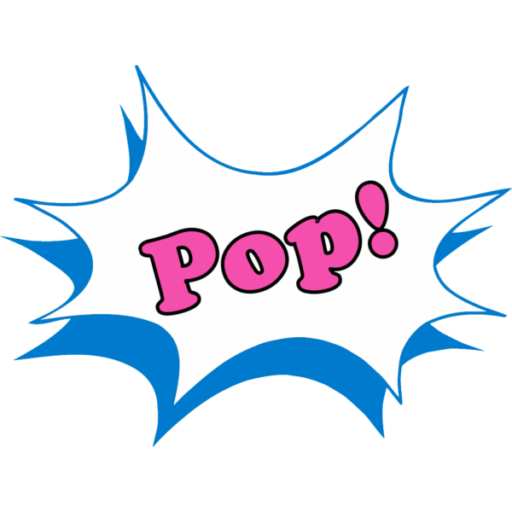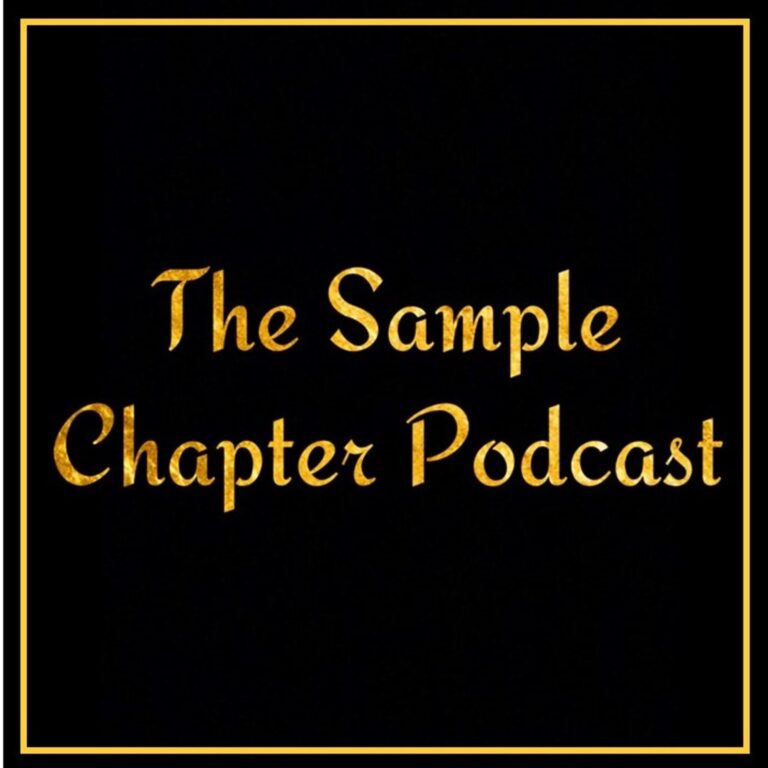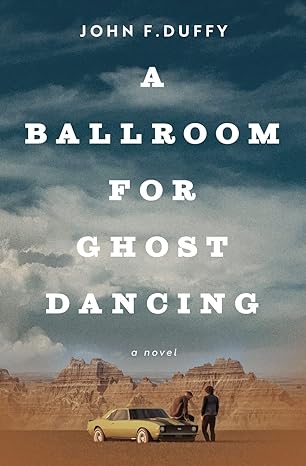
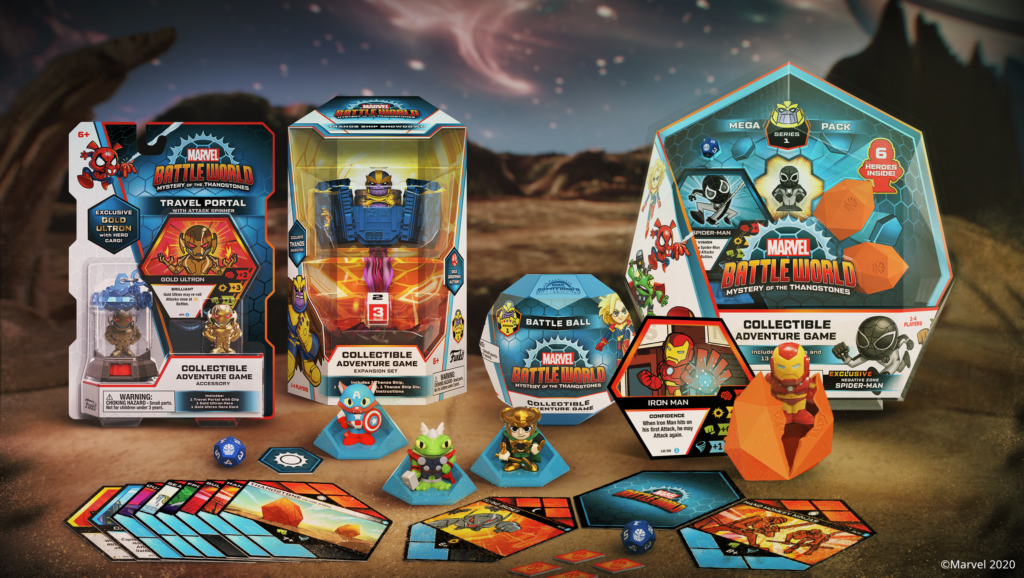
With last month’s announcement that Funko Games’s Marvel Battleworld will be expanding with a third series — titled “Ultimate Armory” — we decided to dig into the first two series to find out what makes this collectible battle game so popular.
The first entry in the Marvel Battleworld series, “Mystery of the Thanostones”, introduces players to the gameplay mechanics that serve as Battleworld‘s storyline. Players use heroes from across the Marvel multiverse to do battle against evildoers while attempting to free additional Marvel heroes that Thanos has imprisoned in Thanostones. This serves as the throughline across both series one and two. The game is for players ages 6 and up. Marvel Battleworld can be played solo or in a group of up to 5 players. Average play sessions run from 15 to 30 minutes; the more players the longer the game lasts. Additional purchases are required for additional players as well.
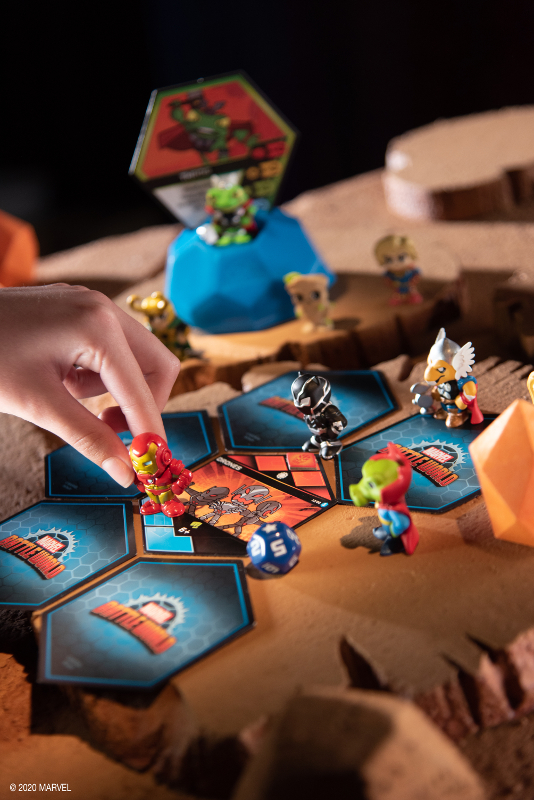
Gameplay is simple and engaging. Players select their Battleworld character, which includes a collectible Funko miniature of the character and the character’s Hero Card, which details the character’s strengths and any special abilities. Players then shuffle an amount of Battle Cards into a deck, depending on the number of players. In addition to the Battle Cards, player also add Thanostone Cards to the deck. At the beginning of a round of play, Battle Cards are flipped face up (one per player) and placed beside one another, forming the game board. Players then take turns moving their miniature to a Battle Card and attempting to defeat the villain or the Thanostone on the card. Each Battle Card details what role of the die is required to “hit” the enemy. The player rolls the 12-sided die and adds the number rolled to their character’s strength in that enemy’s particular area.
For example, a player moves their character to a Battle Card that requires a roll of 8 or higher to hit. That enemy’s category is intellect, represented by a red brain symbol. The player rolls a 7 on the die, then adds their character’s intellect stat modifier to the roll. In this example, the character has an intellect bonus of 2. Adding 7 from the die to the character’s 2 gives the player a roll of 9, which is greater than the 8 needed for a hit. The player hits the enemy. Had either the roll been lower or the character’s intellect bonus been lower so that adding the two together resulted in a number lower than 8, the player would have missed on that turn.
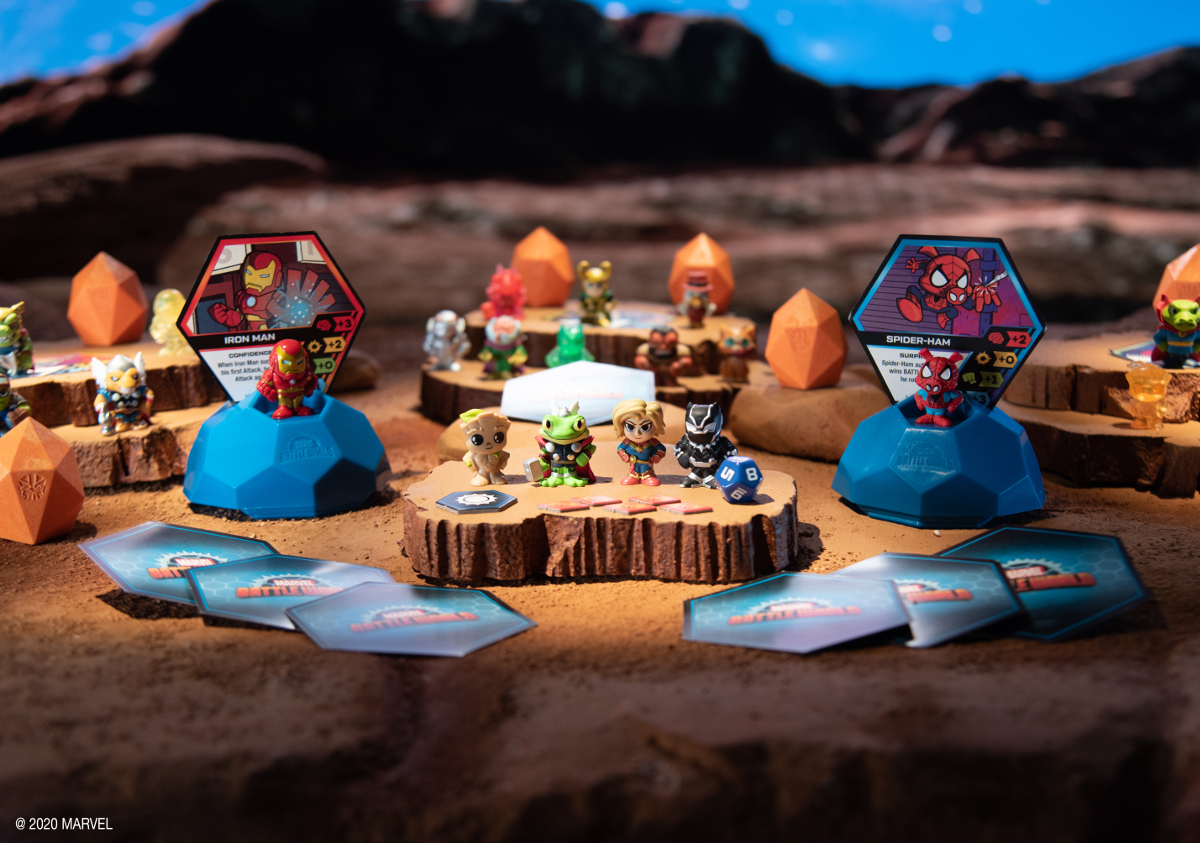
Different enemies require a different number of hits to defeat, from 1 to 3. If an enemy is missed, a Danger Token is placed on the Battle Card. Every time a player misses that enemy, the Danger level is advanced. When a Battle Card has a Danger level of 3, the players take a defeat on that card and can not attempt to fight it again, no matter how close they were to victory.
After each player has taken a turn in the round, the round ends with one player flipping the Danger Coin, which has a sun on one side and a moon on the other. Whichever symbol lands face-up, all Battle Cards of that type that have a Danger Token on them have their Danger level advanced by one. In our playthroughs, we learned that it’s important to defeat Battle Cards that have a Danger Token on them quickly, since there’s a 50/50 chance that Danger level is going to advance at the end of the round.
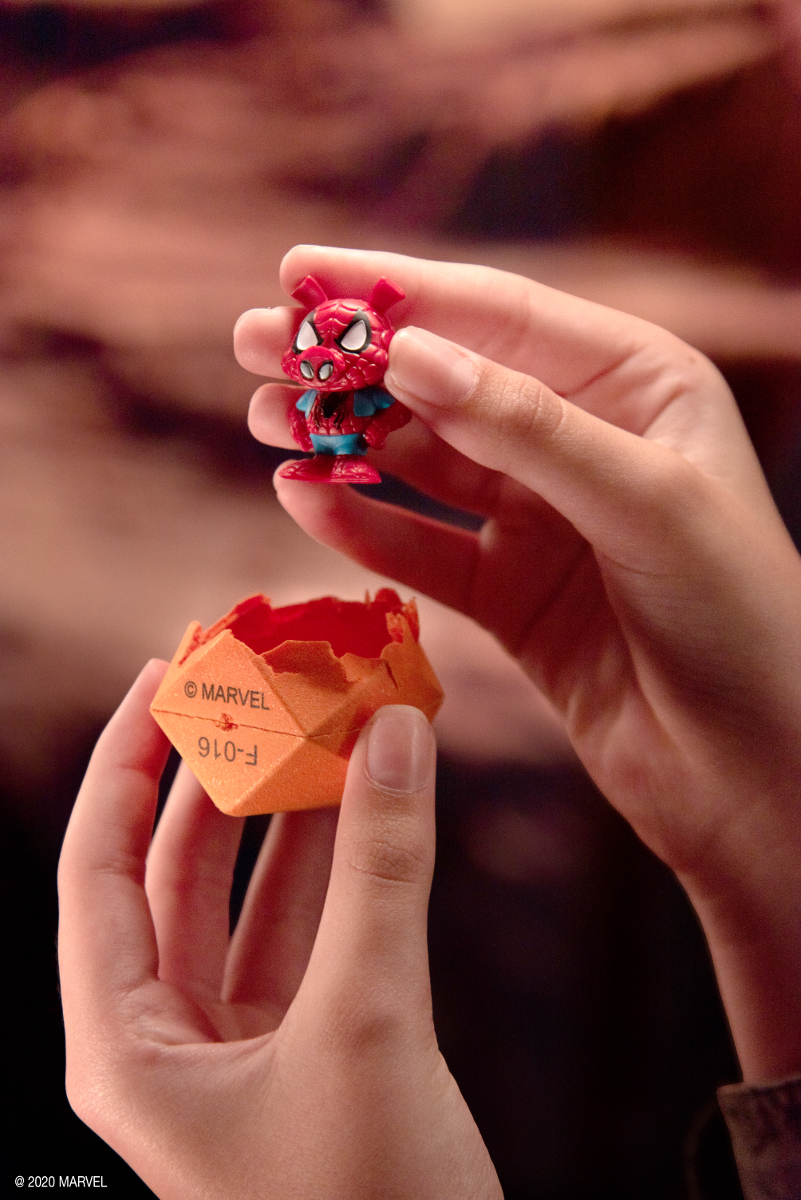
If a player defeats a Thanostone Card, then the player gets to crack open a Thanostone. These are blind boxes that contain an additional, unknown character from the series. The player then adds that character to the game, giving that player another tool to use to defeat the Battle Cards. If the player has no unopened Thanostones left, they simply choose an additional character to bring into the game upon defeating a Thanostone Card.
The game ends when either the players have lost three battles or they have won a predetermined number of battles (three for a single player game, up to 11 for a five player game).

Series 2, “Treachery at Twilight” adds additional characters, Battle Cards, and a new element to Battleworld. Loki’s Trick Battle Cards are card that add a twist to the Battle Card next to them. Drawing a Loki’s Trick from the deck at the wrong time can turn the entire flow of battle. The curse provided by Loki’s Trick is eliminated by defeating either the Loki’s Trick card or the affected Battle Card.
Both series are available in either Mega Packs of multiple heroes, cards, tokens, Thanostones, etc. or in Battle Balls that contain one hero and one mystery hero trapped in a Thanostone. As mentioned earlier, both the Mega Packs and Battle Balls are blind boxes, so you never know which characters you’re going to receive. There are more than 30 unique characters and their variants in each series, making it tough for collectors to put together a full set without having to go to aftermarket sites like Ebay or Mercari to purchase the characters they need to complete their sets.
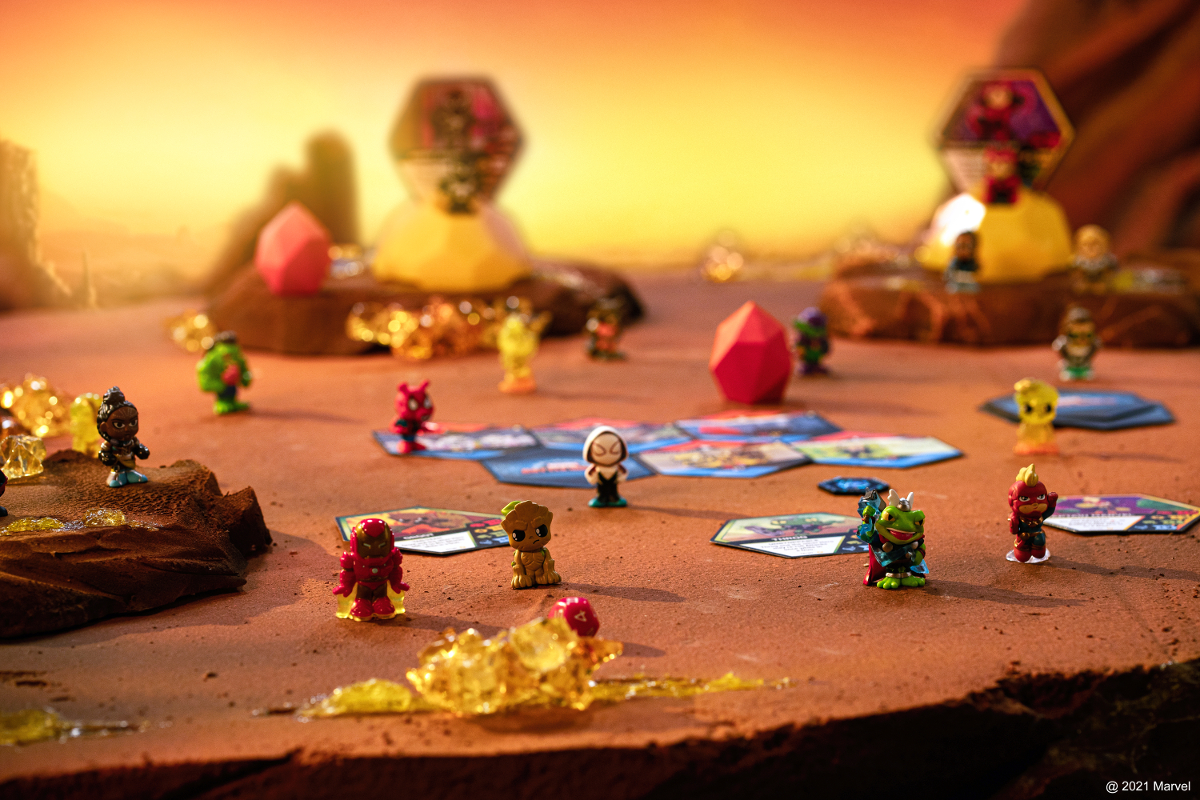
My family really enjoyed Marvel Battleworld. Solo games are fine for when you have a little time to kill and no one else to play with, but the game really shines when playing with others. Players work together to defeat the Battle Cards, so knowing your character’s strengths and abilities and communicating with others is essential. A Battle Card may only require one hit to defeat, but if it’s in a category that your character is weak in while another character is strong in that area, it’s best to be able to communicate who is going where. Additionally, watching the game progress and deciding where to lend a hand because of the number of hits and misses to a Battle Card is essential to victory.
Marvel Battleworld series one “Mystery of the Thanostones” released in the summer of 2020, so it may be hard to find many of them left on the shelves at your local megamart or game store, though they can still be found online. Series one characters and cards are in blue cases and Battle Balls. Series two “Treachery at Twilight” released last summer (2021) and are in yellow cases and Battle Balls — just look for the Loki symbol on the package. These can be found more easily at well-stocked retailers and online.
Series One — “Mystery of the Thanostones”
Negative Zone Spider-Man Mega Pack
Series Two — “Treachery at Twilight”
Marvel Battleworld Storage Case
Disclaimer: Marvel Battleworld series one and series two products were provided for review purposes. All opinions are our own. Purchases made through the links above may benefit Pop Goes the Culture.















